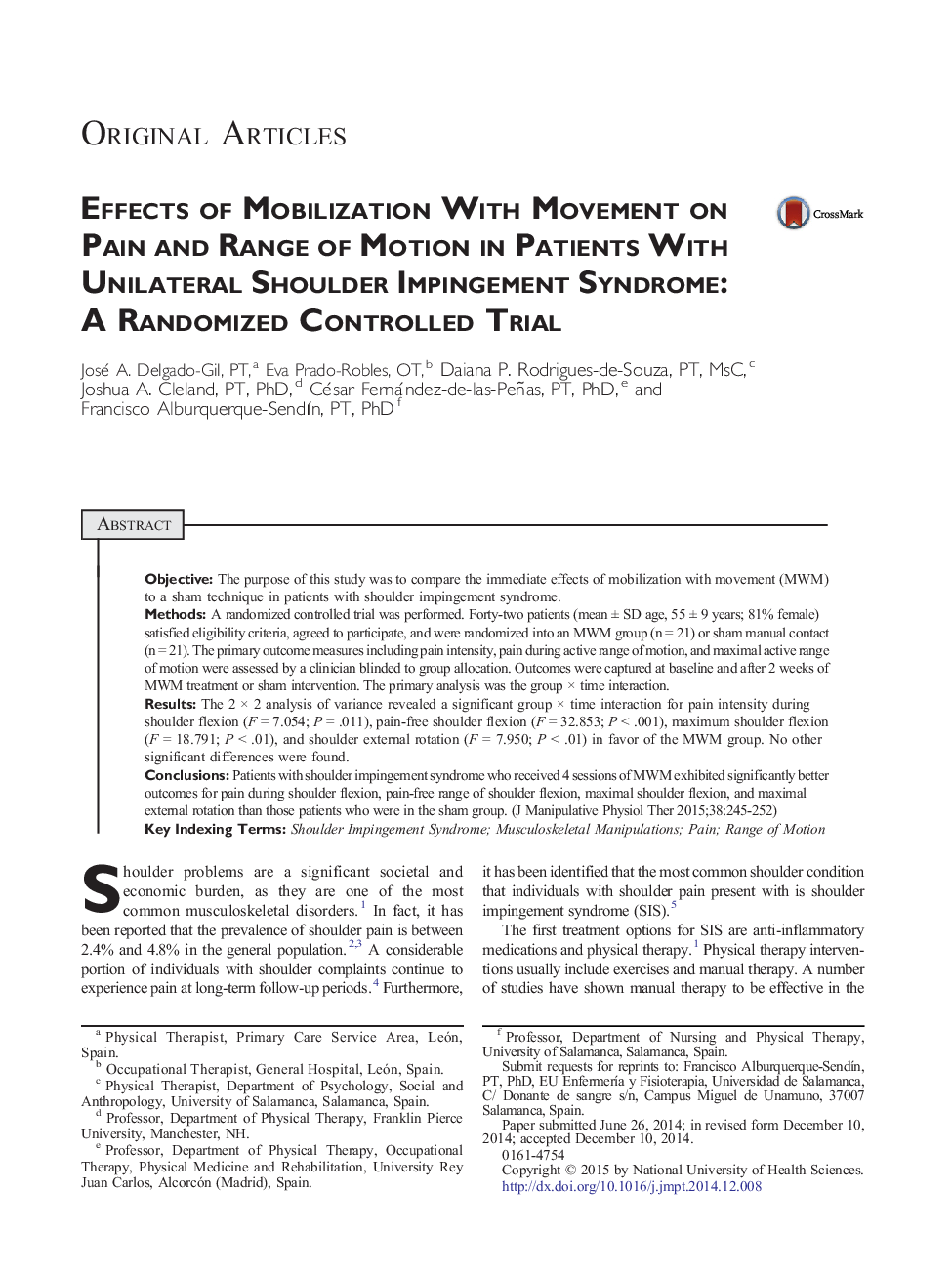| Article ID | Journal | Published Year | Pages | File Type |
|---|---|---|---|---|
| 5863746 | Journal of Manipulative and Physiological Therapeutics | 2015 | 8 Pages |
ObjectiveThe purpose of this study was to compare the immediate effects of mobilization with movement (MWM) to a sham technique in patients with shoulder impingement syndrome.MethodsA randomized controlled trial was performed. Forty-two patients (mean ± SD age, 55 ± 9 years; 81% female) satisfied eligibility criteria, agreed to participate, and were randomized into an MWM group (n = 21) or sham manual contact (n = 21). The primary outcome measures including pain intensity, pain during active range of motion, and maximal active range of motion were assessed by a clinician blinded to group allocation. Outcomes were captured at baseline and after 2 weeks of MWM treatment or sham intervention. The primary analysis was the group Ã time interaction.ResultsThe 2 Ã 2 analysis of variance revealed a significant group Ã time interaction for pain intensity during shoulder flexion (F = 7.054; P = .011), pain-free shoulder flexion (F = 32.853; P < .001), maximum shoulder flexion (F = 18.791; P < .01), and shoulder external rotation (F = 7.950; P < .01) in favor of the MWM group. No other significant differences were found.ConclusionsPatients with shoulder impingement syndrome who received 4 sessions of MWM exhibited significantly better outcomes for pain during shoulder flexion, pain-free range of shoulder flexion, maximal shoulder flexion, and maximal external rotation than those patients who were in the sham group.
